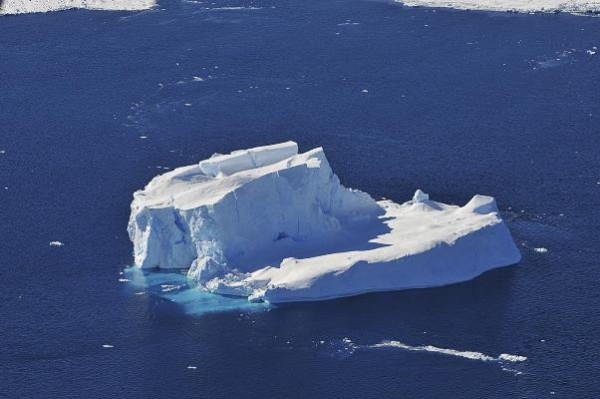Antarctic Glaciers Begin Unstoppable Meltdown, Results In Rising Sea Levels
| Lemuel Cacho | | May 13, 2014 12:27 AM EDT |
(Photo : en.wikipedia.org) An Antarctic Sea Ice floating in the Amundsen Sea.
Two studies were released Monday indicating that five glaciers that feed ice from Antarctica into the Pacific sector of the Southern Ocean are undergoing irreversible decline and what scientists call "the point of no return."
The glaciers that flow into these waters can carry enough ice that would result in sea levels rising by 1.2 meters (3.9 feet) and could cascade to other sections of Antarctica's ice sheet, according to the study.
Like Us on Facebook
Eric Rignot, a glaciologist at the University of California at Irvine, says the glaciers' decline will influence the adjacent sectors of the West Antarctic Ice Sheet. This means that the glacial retreat could triple the already rising sea level. He said that this irreversible decline would result in a global average of three to four meters of sea-level rise.
Rignot's study was accepted for publication in the journal of Geophysical Research Letters.
In another study set to be published this Friday in the journal of science, the two largest glaciers, the Thwaites Glacier, are estimated to retreat from 200 to 900 years. This other study anticipates there will be modest rise in sea levels.
However, and regardless of the time span, the melting of the glaciers, especially Thwaites, is a signal that it would be unstoppable.
What caused the glaciers to retreat? Experts point to a confluence of factors, which include global warming and the region's under-ice terrain.
For example, the weight of the glaciers has put pressure on its crust. River valleys that used to make their way to the ocean are now valleys buried under the glacial ice held below sea level. The glaciers flow seaward until the glaciers hit barriers of elevated underwater terrain, thus, serving as a form of a natural break of the movement.
However, human-induced climate change has changed all that. Greenhouse emissions and other pollution have affected the atmosphere's patterns where the Glaciers are. Intensified winds encircle the Antarctic and drive the glaciers deeper south as opposed to where they should be at.
The southward movement has affected ocean currents. Warm deep water rises in the process and results in the melting of the ice from underneath.
According to reports, if Rignot's study holds up, the climate would continue to warm and the oceans release the heat that it captured.
©2015 Chinatopix All rights reserved. Do not reproduce without permission
EDITOR'S PICKS
-

Did the Trump administration just announce plans for a trade war with ‘hostile’ China and Russia?
-

US Senate passes Taiwan travel bill slammed by China
-

As Yan Sihong’s family grieves, here are other Chinese students who went missing abroad. Some have never been found
-

Beijing blasts Western critics who ‘smear China’ with the term sharp power
-

China Envoy Seeks to Defuse Tensions With U.S. as a Trade War Brews
-

Singapore's Deputy PM Provides Bitcoin Vote of Confidence Amid China's Blanket Bans
-

China warns investors over risks in overseas virtual currency trading
-

Chinese government most trustworthy: survey
-

Kashima Antlers On Course For Back-To-Back Titles
MOST POPULAR
LATEST NEWS
Zhou Yongkang: China's Former Security Chief Sentenced to Life in Prison

China's former Chief of the Ministry of Public Security, Zhou Yongkang, has been given a life sentence after he was found guilty of abusing his office, bribery and deliberately ... Full Article
TRENDING STORY

China Pork Prices Expected to Stabilize As The Supplies Recover

Elephone P9000 Smartphone is now on Sale on Amazon India

There's a Big Chance Cliffhangers Won't Still Be Resolved When Grey's Anatomy Season 13 Returns

Supreme Court Ruled on Samsung vs Apple Dispute for Patent Infringement

Microsoft Surface Pro 5 Rumors and Release Date: What is the Latest?










